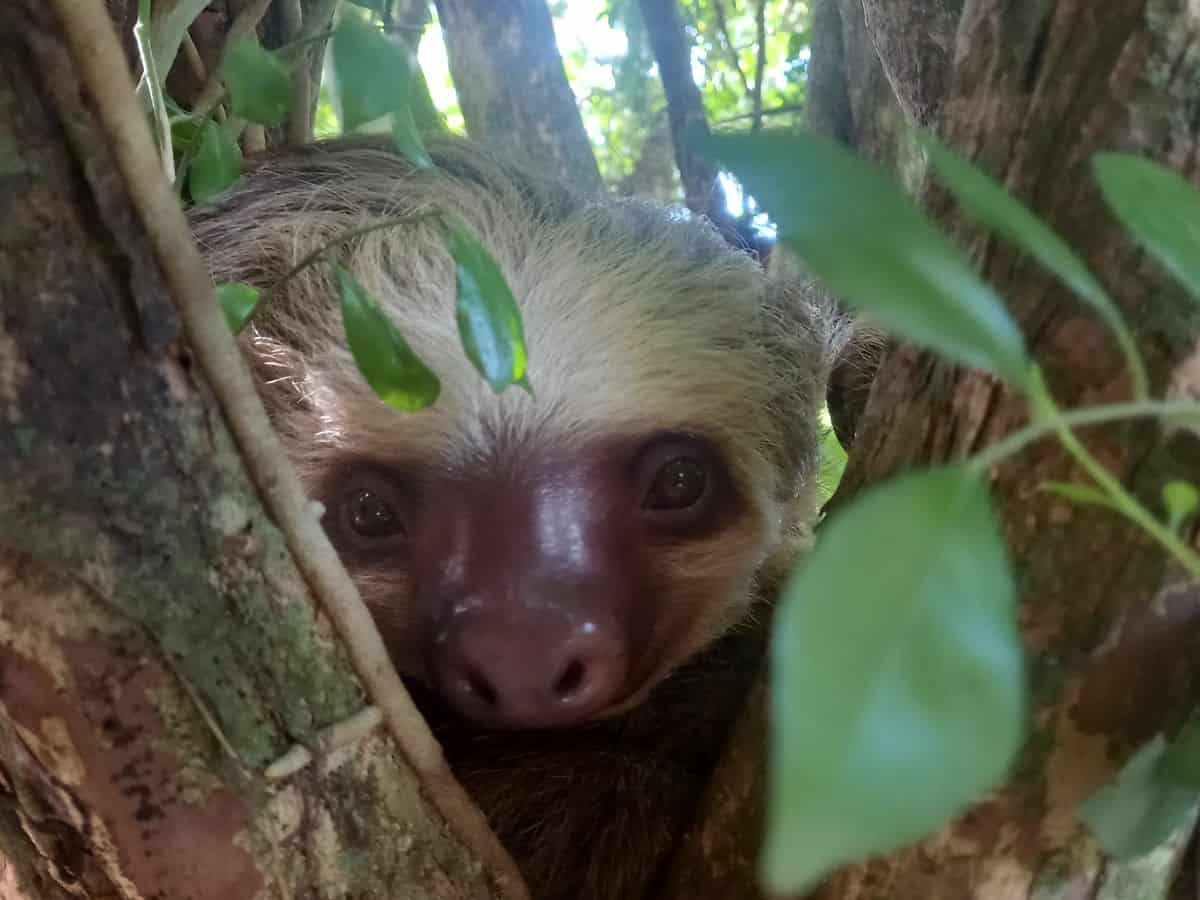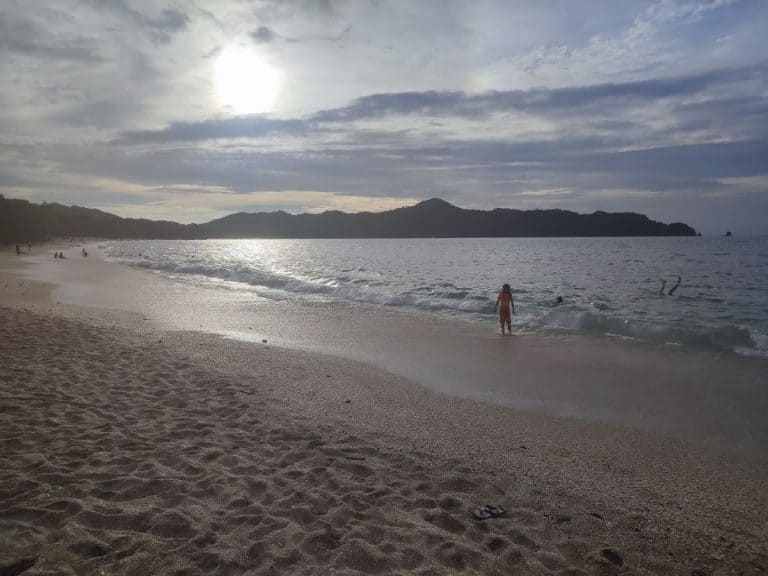Where to see sloths in Costa Rica
Thompsons vs the World contains affiliate links and is a member of the Amazon Services LLC Affiliates Program. Making a booking via these links will mean that we receive a small fee but this is at absolutely no cost to you. The price you pay will always remain the same. For more information please see our Privacy Policy.
If you’re planning a family trip to Costa Rica, there’s a good chance one thing is right at the top of your list — seeing a sloth in the wild. There’s just something about these slow-moving, permanently smiling creatures that makes them irresistible to kids (and let’s be honest, to us adults too!).
But while Costa Rica is one of the best places in the world to see sloths, knowing where to see sloths in Costa Rica — and how to spot them — can take a bit of insider know-how. After five weeks traveling coast-to-coast with our two boys, we learned that sloth sightings can happen almost anywhere: in national parks, on beaches, or even sitting on top of a geocache you’ve just hiked to!
In this guide, we’ll share the best places to see sloths in Costa Rica, from the lush jungles of La Fortuna to the calm beaches of Cahuita, plus the top sloth sanctuaries in Costa Rica where you’re guaranteed a close-up encounter. Here’s how to make your family’s sloth-spotting dream a reality.
✈️ Planning your own Costa Rica adventure?
Our family spent over five weeks exploring every corner of the country — and we’ve pulled together everything we learned into one handy guide.
👉 Download our FREE Costa Rica Family Travel Planner to get insider tips on where to stay, what to budget, and the best wildlife spots (including our favourite sloth tours!).
It’s the perfect first step to turning your dream Costa Rica trip into reality — without the stress of planning from scratch.
Table of Contents
What type of sloths live in Costa Rica?
There are six species of sloth in the world and two of these live in Costa Rica. These are the Brown-Throated Sloth (three toed) and Hoffman’s Two-Toed Sloth. We were lucky enough to see several of each during our time travelling in Costa Rica.
The Three Toed Sloths have black eye patches and their face colouring makes them look like they are smiling. This is the familiar sloth face that you’ve probably seen printed on stuff all over the world!
The Two-Toed Sloths are larger and have white-ringed faces and hairless brown snouts. Once you’ve seen a few in the wild it quickly becomes quite easy to distinguish between the two species.
There are approximately 100,000 sloths in the wild in Costa Rica.
Fun sloth facts
They really are absolutely fascinating animals. Before we’d even boarded the plane to Costa Rica the boys had read up on as many sloth-related facts as possible in their excitement! Here are a few of the facts they gathered:
- Sloths sleep for around 15hours every day
- They are vegetarian, with a diet of leaves, berries and seeds
- They might be slow movers on land but they are actually excellent swimmers (and much faster in the water!)
- They come down to the ground once a week to defecate (this was definitely the boys’ favourite fact)
- They are native to South and Central America – other countries with large sloth populations include Brazil, Venezuela, Colombia, Peru, Bolivia, Panama and Ecuador
In Costa Rica, one of the main threats facing sloths is electrocution on un-insulated power lines. Over 1,500 sloths each year are electrocuted on power lines in Costa Rica. The Sloth Conservation Foundation is working with the electricity board in the country to insulate as many power lines as possible to protect the sloths (and they take donations to help fund the resources for this on their website).
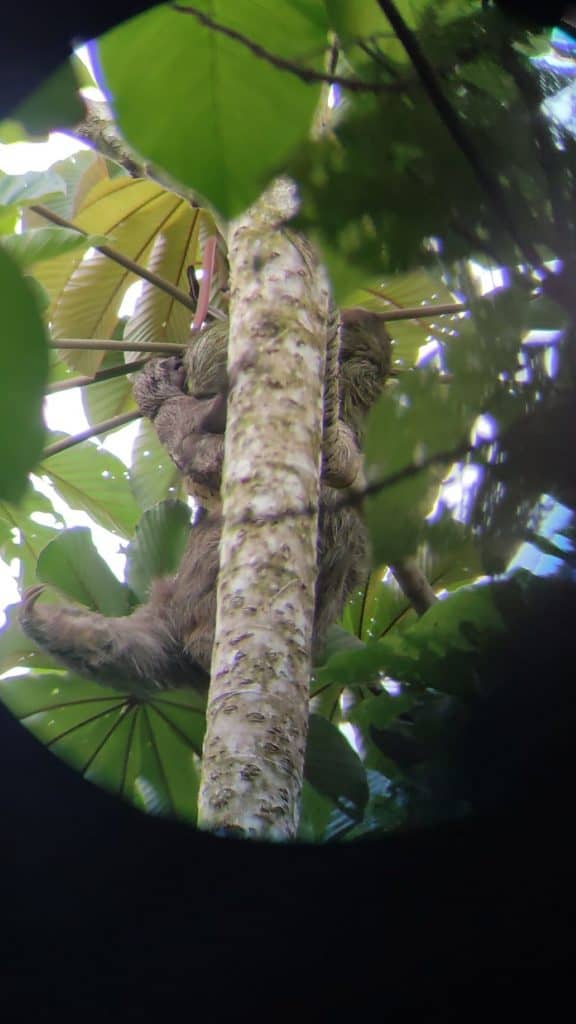

Where to see Sloths in Costa Rica
Whatever your itinerary looks like for Costa Rica, the chances are that you’ll end up somewhere that is home to sloths.
The only exception to this is if you’re sticking to the Guanacaste region. This includes tourist hotspots like Tamarindo, Nosara and Samara. The drier tropical forests of this region are not the natural habitat of sloths so you’re unlikely to see them anywhere in the wild.
But the good news is that as long as you’ve got at least ONE of the spots below on your list then you’ve got a pretty good shot at seeing sloths in Costa Rica.
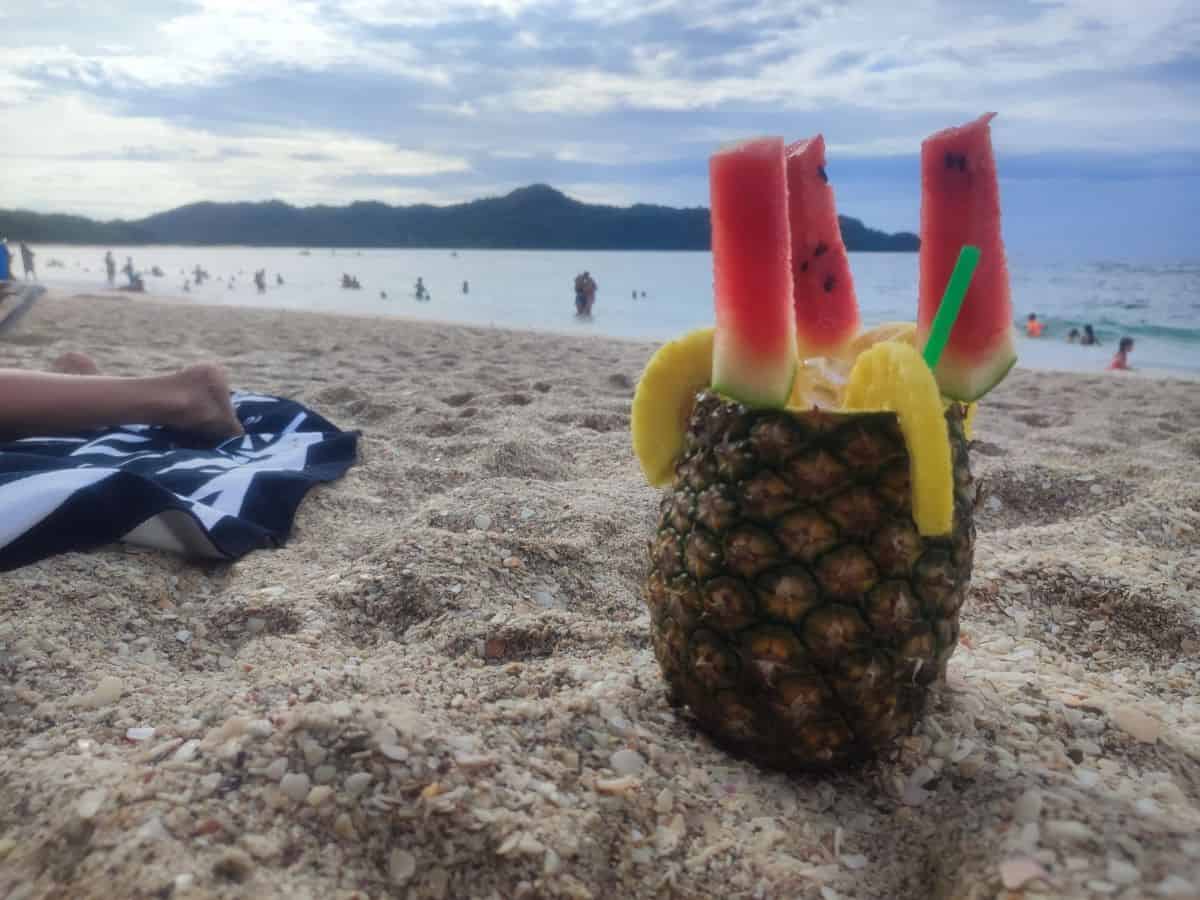
Want the find the best places to stay in Costa Rica?
Check out our in-depth guide to the BEST hotels, eco-lodges and beachfront getaways for families (on any budget!)
In the wild
Seeing a sloth in it’s natural environment is not actually as difficult as you might think. Many of the (excellent) national parks in Costa Rica are very accessible. Trails are easy to navigate and in most cases there are hikes that are suitable even for smaller children.
One of the trickier bits of sloth spotting though is the fact that sloths don’t move around much. They can often be quite high up in treetops and camouflaged pretty well. Whilst we did see plenty of sloths on our own, I would recommend hiring a naturalist guide if you really want to increase your chances of seeing sloths in Costa Rica.
Like all wildlife encounters, there is never a guarantee of success! The areas and parks below though are a round-up of the best places to see sloths in Costa Rica.
Seeing sloths in Manuel Antonio National Park
This was our first stop in Costa Rica – and to our absolute joy, the first place we saw a sloth!
Manuel Antonio National Park is a hugely popular destination and the most visited national park in Costa Rica. For good reason! It’s got easily navigable wooden walkways, stunning beaches and wildlife at every turn.
We opted to visit without a guide and saw two sloths on our own. One was spotted by a fellow traveller curled up at the top of a tree. We were BEYOND excited at this first ever spot so early in our trip.
But this was then followed by an even closer encounter which the boys still talk about. As we left the beach there was a three-toed sloth on the ground at the base of a tree. Right in front of us! The amazement on the boys’ faces was one of those moments you never forget.
We watched from a careful distance as the sloth did a poo (this is where the boys’ earlier fact-finding came in handy!). Then it slowly climbed back up the tree. What an introduction to Costa Rica!
If you are short on time and REALLY want to maximise your chances of spotting a sloth at Manuel Antonio then hire yourself a guide. They are incredibly knowledgeable – they’re likely to know the trees where sloths can usually be found and point these out to you.
Best places to see sloths in Cahuita
Set on the gorgeous Caribbean Coast, Cahuita was one of our absolute fave stops. The beaches here are breath-taking and the vibe is incredibly chilled.
We saw several sloths here right on the beach. Particularly at Playa Negra, the black sand stretch of beach a short walk from the town. There were two or three specific trees that usually had their resident sloth in them. We happily spent hours hanging on the beach and watching them snooze in the trees or slowly move around.
We also love a bit of geocaching on our way round the world. The one we navigated to just off Playa Negra actually had a sloth right there, sitting on top of it. Seriously, wildlife in Costa Rica really is on another level!
If you fancy a hike, its also well worth a visit to Cahuita National Park. This has both short and long trails through the rainforest and two beautiful white sand beaches. And guess what – more sloths!
Again you can hire a guide in advance to give you an even better chance of spotting sloths in the trees. Or if you’re got the time, head off for a hike and just see how many you can spot. On one of our visits we even saw one casually crossing the road right at the entrance to the park!
Where to see sloths in La Fortuna
We saw more sloths in La Fortuna than anywhere else in Costa Rica. This was largely down to the incredible sloth tour we took with Armando. We saw 13 sloths in just under two hours, including two tiny babies. This was an absolute highlight of our time in Costa Rica!
Armando is passionate about sloth conservation and hugely knowledgeable on all things sloth. His telescope allowed us to see the sloths in much more detail too. The tour was easy for all of us, including the kids, and really engaging.
As well as the sloths we even saw a HUGE Yellow Rat Snake which the boys were very excited about!
If you prefer a self-guided sloth experience, the Bogarin Trail just outside La Fortuna is another great option. You can walk the trails here without a guide (admission in £15/US$20pp) or you can opt for a guided tour (£34/US$45pp). It’s walkable from the town if you don’t have your own transport.
If you’re visiting Costa Rica with kids then La Fortuna is an unmissable stop on your itinerary. It’s the perfect mix of nature and adrenaline and packed with amazing activities!
Spotting sloths in Tortuguero National Park
Tortuguero is home to a good-sized sloth population. Wild sloths are frequently spotted on the guided boat tours that run along the waterways. Watching the sloths – and other wildlife – from the river is a great way to get close to nature without disturbing it.
There are also fairly regular sloth spotting in and around Tortuguero itself, so if you’re lucky you might get a bonus sloth spot in here!
Tortuguero is wonderfully wild but is less accessible than many of the other national parks in Costa Rica. With no road access you can only get there by plane or boat. So this adventure needs some careful planning (and a bit more time too).
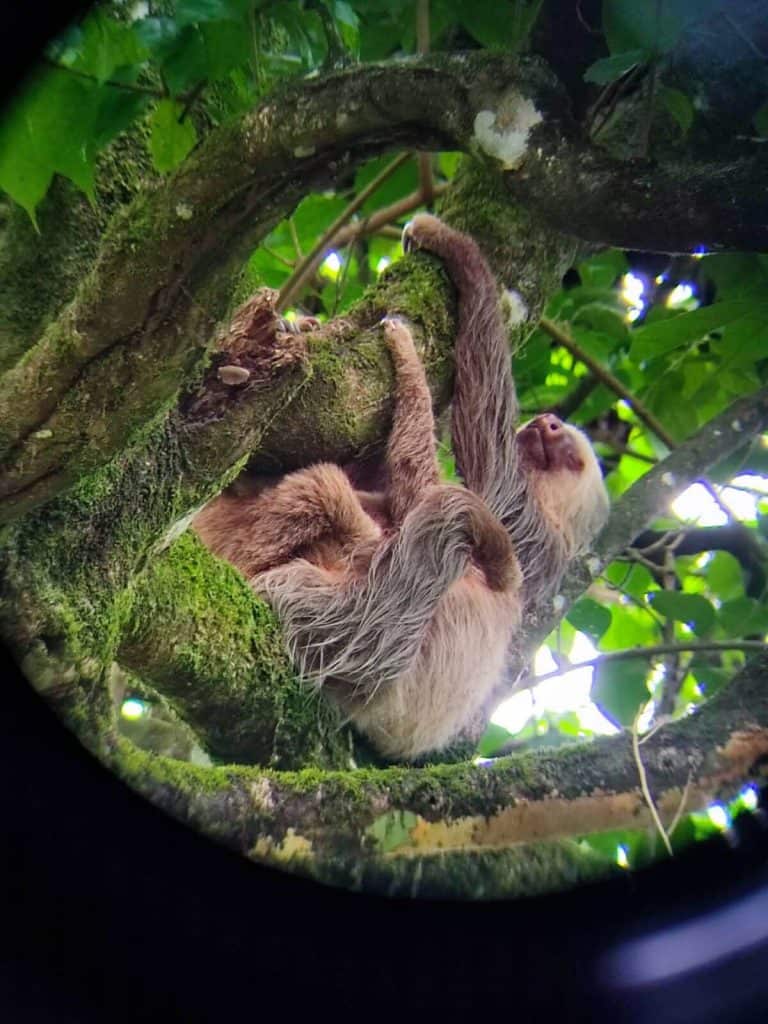
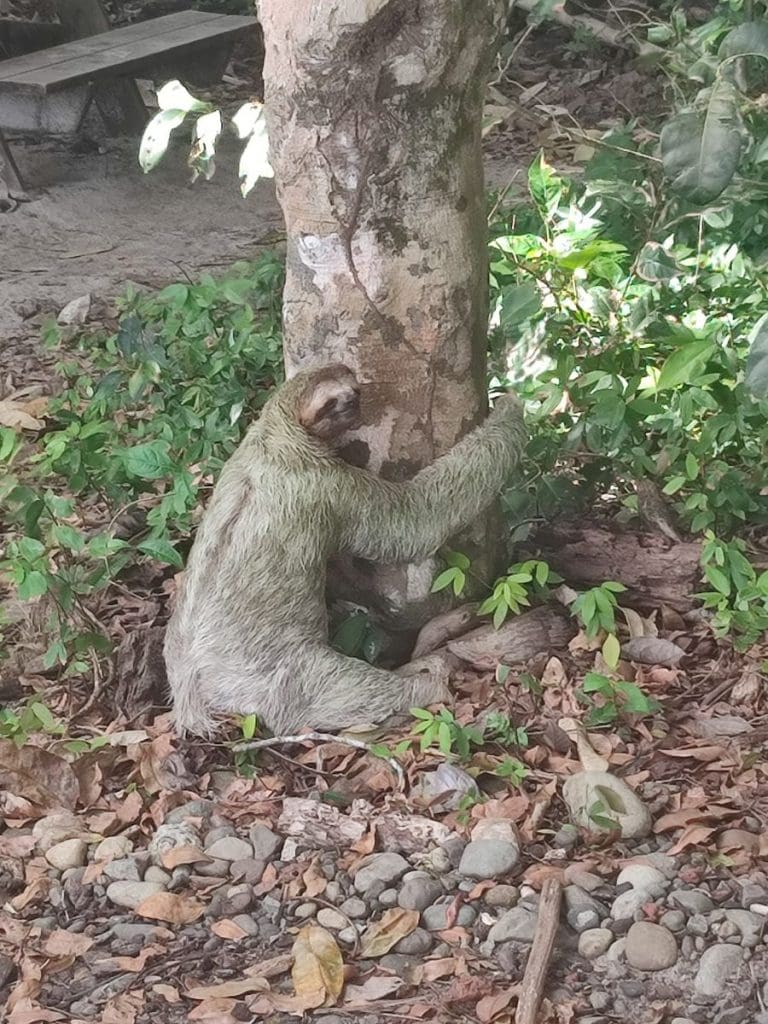
Best sloth sanctuaries in Costa Rica
If you really want to guarantee a sloth sighting on your trip, then add a visit to one of the sloth sanctuaries in Costa Rica to your itinerary. There are several across the country that work with rescued animals to rehabilitate them back in to the wild.
Jaguar Rescue Centre (Cahuita to Manzanillo)
On the Caribbean Coast between Cahuita and Manzanillo, the Jaguar Rescue Centre takes in all different kinds of animals. Their aim is to rehabilitate them for release back in to the wild.
This includes sloths that have been injured or orphaned. When we visited we were able to see a tiny baby sloth that was being cared for by staff at the centre. To limit human interaction, we were only able to file past and take a quick peek at the little bundle. But this little sloth was still amazing to see!
Read our full review of the Jaguar Rescue Centre for more details.
Sloth Sanctuary of Costa Rica (near Limon)
Located between Limon and Cahuita, the Sloth Sanctuary of Costa Rica is home to over 200 sloths. If you want even more sloth facts to add to your collection, this is the place.
The centre has custom designed enclosures that support sloths at each point in their recovery and (hopefully) released back in to the wild. There are a number of permanent resident sloths (whose injuries mean they cannot be released) and you see these on the tour.
We saw around a dozen sloths in total. For an additional $5 you can opt for the canoe trip at the end. This was definitely the highlight as we saw a couple more sloths in the wild on our journey back!
Standard tours are £22.50/US$30 for adults and £11/US$15 for children aged 5-12.
Selvatura Park Sloth Sanctuary (Monteverde)
Selvatura Park is an eco adventure park near Monteverde. There are trails to hike, ziplines and hanging bridges – and a small sloth sanctuary. This has around 10 resident rescued sloths that you can see up-close in their enclosures.
Whilst you can book for a whole day out at Selvatura, you can also visit the sloth sanctuary on it’s own too.
Toucan Rescue Ranch (near San Jose)
This rehabilitation centre is about a 30-min drive from San Jose, so is a great option if you’re coming in or leaving Costa Rica via the capital. They help a whole range of birds and mammals, so there’s a lot to see.
You can join an Education Walk where one of the ranch’s tour guides will take you to meet all of the resident birds and animals. This takes around two hours, and yes, includes sloths!
Tours are priced at £28/US$37 per adult and £5.60/US$7.50 for kids aged 6-10.
Tips for sloth spotting in Costa Rica
Sloth-spotting takes patience, a good eye, and a few insider tricks — here’s what helped us the most on our family trip.
- Never, ever touch or attempt to hold or interact with a sloth. Human touch can make them very panicked and is unfair on the sloth!
- Remember that Costa Rica has rules in place around selfies with animals as part of it’s drive to keep animal tourism ethical
- Pack a set of binoculars for spotting sloths in the treetops
- If you’re short on time, hire a guide to maximise your chances of spotting a sloth. You’ll also learn so much more about these amazing animals by hiring an expert!
Seeing a sloth in Costa Rica never stops being magical — no matter how many you spot. For us, every sighting felt like a tiny reward for slowing down and really looking at the world around us. And that’s kind of what Costa Rica does best — reminding you to take things at sloth speed and enjoy every wild, muddy, unforgettable moment together.
Planning a family trip to Costa Rica?
If your family is dreaming of doing the same, we’ve got plenty more Costa Rica stories, itineraries, and practical guides to help you plan it all with confidence.
👉 Join our family travel community and get our FREE Costa Rica Family Travel Planner — packed with tips, honest costs, and our favourite eco stays.
It’s the easiest way to turn “maybe one day” into your next big family adventure.

